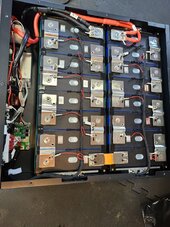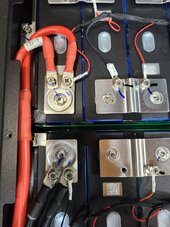I've got a support case with SS that I'm working with but wondered if anyone else had this issue. Out of the blue, one of the LifePower4 batteries in my array went completely dark - no Run, Alarm, or SoC light showing. Upon removing from the array, I could hear a high pitched noise, and tested the voltage with the breaker on to 27.36V - nearly exactly half of the expected voltage for the battery.
Flipping the breaker doesn't do anything, holding reset does nothing. The high pitch noise is constant, whether the breaker's on or not.
Anyone else seen this issue, or know what would cause it? Thanks!
Flipping the breaker doesn't do anything, holding reset does nothing. The high pitch noise is constant, whether the breaker's on or not.
Anyone else seen this issue, or know what would cause it? Thanks!







